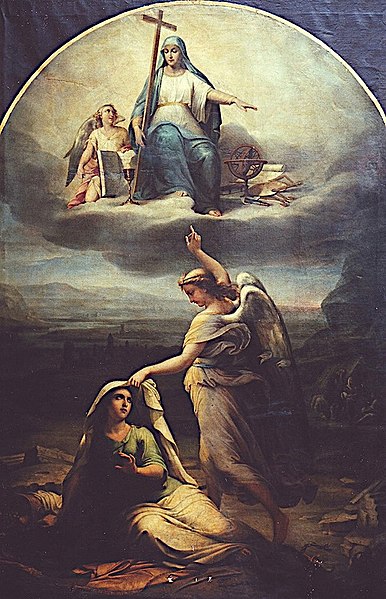1842 Wallachian princely election
Elections for the princely throne of Wallachia were held on December 20–21, 1842, marking the start of Gheorghe Bibescu's rule. They were the first of two such elections ever held in Wallachia, and historic in that they restored and modernized the elective monarchy, after a 112-year hiatus. While earlier elections took place under the Vlach law, the 1842–43 race was held under a modernized suffrage: there were multiple candidates, an electoral college, approval voting, and exhaustive ballot. The selection of voters extended beyond the inner circle of the Wallachian boyars, with consultation of the provincial landowners and the guilds. Such practices reflected the modernizing trend instituted by the Regulamentul Organic regime in both Danubian Principalities, under the shared custody of the Russian and Ottoman empires. In Moldavia, however, the regime did not permit princely elections, making Bibescu's the only Regulamentul reign to have been consecrated by a vote.

1842 Wallachian princely election
The Ordinary National Assembly, 1831 watercolor
The national awakening of Romania, in an 1850 allegory by Gheorghe Tattarescu
3rd Class boyars and traders of Bucharest (1825 watercolor), included in the sortition of 1842
Alecu Filipescu-Vulpea, also known as Aleco Filipescul, Alecsandru R. Filipescu or Alexandru Răducanu Filipescu, was a Wallachian administrator and high-ranking boyar, who played an important part in the politics of the late Phanariote era and of the Regulamentul Organic regime. Beginning in the 1810s, he took an anti-Phanariote stand, conspiring alongside the National Party and the Filiki Eteria to institute new constitutional norms. Clashing with the National Party over the distribution of spoils, and only obtaining relatively minor positions in the administration of Bucharest, Filipescu eventually joined a clique of boyars that cooperated closely with the Russian Empire. His conditional support for the Eterists played out during the Wallachian uprising of 1821, when Vulpea manipulated all sides against each other, ensuring safety for the boyars. He returned to prominence under Prince Grigore IV Ghica, but sabotaged the monarch's political reform effort and also seduced his wife Maria. She was probably the mother of his only son, Ioan Alecu Filipescu-Vulpache.

Belvedere (or Golescu–Grant) Manor, as it looked in 2013
A boyar and a Russian officer on Dealul Mitropoliei, Bucharest, in 1832
Zoe Brâncoveanu, Gheorghe Bibescu's wife and founder of Așezămintele Brâncovenești (portrait by Theodor Aman)
Filipescu tomb in Mavrogheni Church








